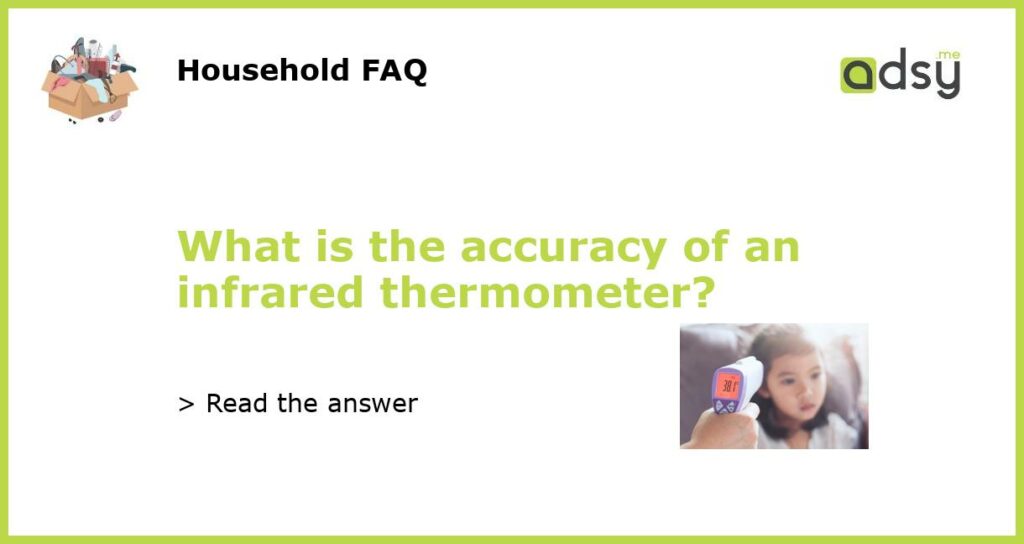A Brief Overview of Infrared Thermometers
Infrared thermometers are devices used for measuring temperature from a distance. They work on the principle of detecting infrared radiation emitted by objects and giving an output which correlates with the temperature of that object. They have become quite popular, especially since the outbreak of the COVID-19 pandemic, where their use has been recommended by health organizations as an effective way of screening for fever. However, a question often asked is: how accurate are infrared thermometers?
Factors that Affect the Accuracy of Infrared Thermometers
The accuracy of an infrared thermometer depends on several factors, such as its emissivity, distance-to-spot ratio, and atmospheric conditions. The emissivity of an object refers to its ability to emit infrared radiation, and it varies depending on the material of the object. For instance, shiny surfaces such as metal have a low emissivity and might require correction factors to obtain accurate readings. The distance-to-spot ratio (D:S ratio) of an infrared thermometer refers to the ratio of the distance of the thermometer from the object and the spot size of the thermometer on the object. The accuracy of the readings decreases as the distance between the thermometer and the object increases. Atmospheric conditions such as dust or smoke can affect the accuracy of infrared thermometers by interfering with the infrared radiation emitted by objects.
How to Ensure Accuracy of Infrared Thermometers
Manufacturers of infrared thermometers provide enclosed instructions on how to apply their device accurately using calibration with a black body radiation source. A black body is an object that can absorb all incoming radiation and is maintained at a consistent temperature. When an infrared thermometer is calibrated with a black body, it eliminates the risk of false readings by fine-tuning the accuracy of the instrument. Proper use and maintenance of the thermometer are crucial in obtaining accurate results.
Accuracy of Infrared Thermometers in Detecting Fever
The accuracy of infrared thermometers in detecting fever has been a subject of debate. Several studies have indicated that while infrared thermometers are not as accurate as mercury thermometers when used on the forehead or temple, they can be used for screening purposes in detecting fever. The Food and Drug Administration (FDA) recommends that non-contact infrared thermometers are used as a preliminary screening tool for fever in healthcare settings, but if an elevated temperature is detected, it should be confirmed with a secondary thermometer.
Infrared thermometers can provide accurate temperature readings if used correctly and maintained properly. However, their accuracy can be affected by several factors such as the emissivity of the object being measured, the D:S ratio, and atmospheric conditions. Proper calibration and use are essential in ensuring the accuracy of infrared thermometers. While they may not be as accurate as mercury thermometers, they are still effective in screening for fever. As such, they are recommended for preliminary screening purposes and should be confirmed with a secondary thermometer if an elevated temperature is detected.






